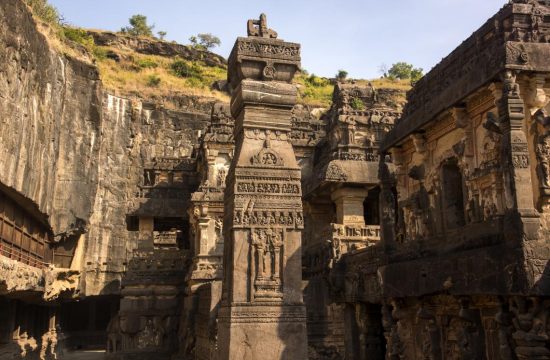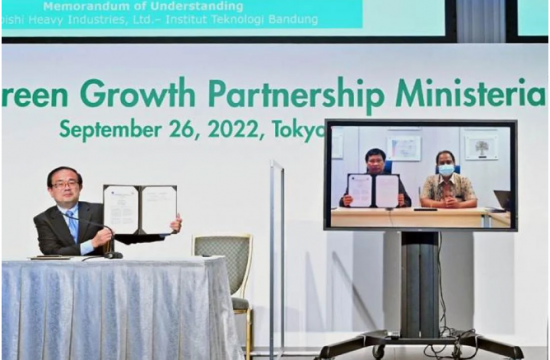
Copyright : Waseda University
Many people in Japan visited Shinto shrines at the beginning of the new year. Long lines formed at even the small local shrine near my home, snaking out of the grounds and down the road. Rather than consisting of just elderly people, these lines reflected an even distribution of age, from children to young couples, the middle-aged and the elderly. As evident in this scene, there are no signs of a decline in Japanese folk religion.
During hatsumōde (the first visit to a shrine of the new year), people pray for their happiness over the coming year. Naturally, some make specific requests for things like passing an entrance exam. Very small amounts of money (50 yen on average) are tossed into the donation box for such “big favors.” As this cannot be regarded as a fair exchange by any stretch of the imagination, no rationally-thinking person would conclude that the gods will take the request seriously.
Yet we still join our hands in prayer at shrines for the safety of our families and the happiness of our friends and feel like we’ve done something good. And we optimistically wonder if the gods might possibly grant our requests. This “doing something good” and “optimism” are keys to understanding Japanese folk religion.
Japanese folk religion has traditionally been more of a communal religion than a personal one. Even today, the Emperor of Japan plants rice at the Imperial Palace—a ritual in which the Emperor prays for a bountiful rice harvest as the head of the community (the “community” in this case being Japan). Speaking of rice, long ago when there were not enough irrigation systems, the Emperor would send a messenger to a place like Mount Yoshino to pray for rain when it seemed the people would be unable to secure the water needed that year.

Copyright : Waseda University
As you may remember from Japanese history you learned in school, there have been several Emperors since ancient times who were devout followers of Buddhism. These Buddhist Emperors faithfully held community events like rainmaking rituals and the Autumn Harvest Festival (Niiname-sai). There was no sense of contradiction in this for either the Emperors or the people around them. This was because Buddhism was a personal religion while folk religion was a communal one. If the head of the community does not hold these events as its head, his title loses its meaning. This is different, however, from a personal religious belief. On the other hand, one cannot be both a Buddhist and a Christian since both Buddhism and Christianity are personal religions.
Thus, Japanese folk religion is a communal religion in which, essentially, “everyone” in the community prays for the happiness (good harvest and long life) of “everyone.” At some stage, specialized Shinto priests emerged and took charge of the events (in a way, the Emperor also possesses the attributes of a Shinto priest). At any rate, “everyone” prayed to the gods on behalf of “everyone,” in principle. And this was “something good.”
In fact, while there are nature gods like the god of fire and the god of water, Japanese gods (kami) are primarily ancestral gods, or what are called “tutelary gods” (ujigami). When a grandfather or grandmother dies, the entire family prays, believing that the soul of the deceased will be purified through prayer and transform into a god over time. The more the family prays, the purer the ancestor becomes and the closer he or she gets to godhood. Thus, even if the spirit of the deceased tries to do bad things, it will be transformed from a demon or a ghost into a god through prayer.
This tenet gives ancestral gods a very distinct feature: they never do anything bad to their descendants. When a high school student about to take the college entrance exam and her parents pray to a god (they could go to the memorial tablet of a grandfather who had died not that long ago), the god (grandfather) will never respond, “Ha! That’s a good one. I never really liked this kid, so I’m going to make her fail.” From the god’s perspective, being an ancestral god is inconvenient in a way—his vector only moves in the direction of good because the family is always praying to him. He doesn’t have the ability to do bad things.
To take a well-known example from history, after the death of Sugawara no Michizane, his political opponents became sick and died and natural disasters occurred, leading people to believe that these events were caused by his wrath. As a result, the government of the time built the Tenman-gū shrine in Dazaifu dedicated to Michizane. Once the shrine was built, people prayed to Michizane continuously; his will changed, and he became a god who only did good things.
In other words, Japanese gods (kami) are gods that cannot do bad things and are not to be feared. They are easy to get along with, compared to gods in other countries. You could say this is a very optimistic way of thinking.
This Japanese belief that the soul of any person will become a benevolent god if everyone prays to it is also the cause of serious international strife today. In China, the reputation of the deceased is sealed when the lid of the coffin is shut; a good person will remain a good person, and a bad person will remain a bad person forever. Thus, visiting the Yasukuni Shrine is perceived as approval of the “bad people” (war culprits) enshrined there. In Japan, however, it is based on the belief that everyone should pray for the souls of all people and that doing so will transform them into benevolent gods. This is why the Japanese do not understand the irritation of the Chinese. Awareness of this tenet is necessary for mutual understanding between China and Japan.








